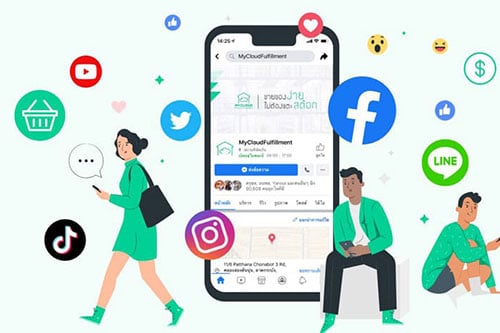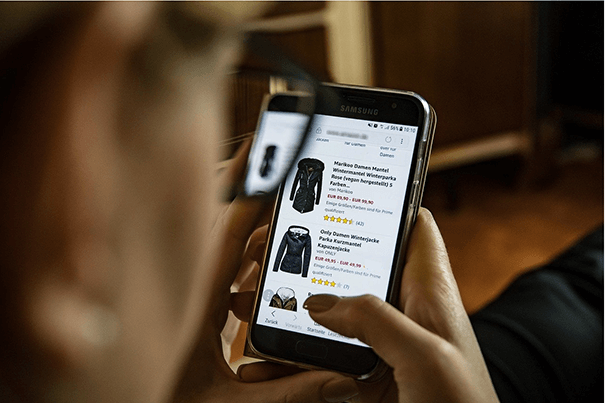Share this on
In Roman mythology, Janus was the tw0-faced God of Gates and Doors—which seems rather appropriate, actually, for the ecommerce world. But he was also, of course, how the Ancient World thought about the transition from the old to the new—and is the reason the first month of the year is ‘January’. And in many ways, retail tech is, just like him, facing both backwards and forwards when it comes to ecommerce architecture.
What I mean by this is that when we all started (so this is our face looking back on our recent digital shopping history), we were all about replicating the store experience online. The focus (and it could be a bit frantic at times, but a lot of fun) was on getting the product catalogue online… prompting people to ‘add to basket’, checkout and pay.
The first movers in the retail tech market were brilliant at meeting that need: it was all very simple, functional, and met the market need well at the time. But fast forward a few years, and the picture started to get more complicated. SaaS/Software-as-a-Service and cloud-enabled ecommerce solutions came along to make building that retail store in the sky cheaper and faster; and a whole, great new ecosystem of technology providers, applications, plug-ins, evolved from that.
But what also happened is that everyone just got caught up on the same page. So, if you don’t have an ecommerce service more innovative and more personalised than the guy across the street… you’re in trouble.
That trouble is compounded if you have stuck all the way through with the same all-in-one platform that you started with. If all your tech does is the same very simple, very template-driven approach to ecommerce, then you’re a bit stuck. You’re not able to innovate; you’re limited by the old way of doing things and the old way of doing business.
What monolithic can’t give you
To take just one facet of this among many, real-time personalisation—capturing online/offline data, the in-browsing experience, to open up a more customised, on-the-fly adaptable CX for everyone—is very, very hard to see happening with a monolithic architecture. Another driver of change is that in the Before Times, people went to your website and bought things there, but in the omnichannel 2020s we’re in, people buy on their social media, via a marketplace they trust, through apps, all sorts of different channels. One old central system with a monolithic approach just can’t easily do the same level of quality job across all that space for you.
Retailers know this, and that they must move on. This is where the other face of that ecommerce Janus is looking: to a future centred on a new approach to building and running advanced, flexible digital shopping capability, usually summarised as the move to Headless.
It’s a sentiment ably captured by McKinsey in a recent report on the use of tech in the Fashion sector, where its researchers spotted a major shift in a sector notoriously previously reluctant to flash the cash when it came to IT: with Fashion brands moving from typical 1.85 revenue investment in tech to more like 3.5% between now and 2030.
That investment doesn’t just include Headless—the consultancy calls out AI and automation, too. But Headless is clearly the foundation for this and other arms of retail advance and futureproofing, including dealing with the Sustainability and supply chain challenges that loom larger and larger for the sector. Our experience for sure backs up that Headless ecommerce is a very good approach for brands to meet all these challenges while also improving performance and bang per technology buck.
Many ways to start building a Headless roadmap that works for you
There are some challenges about moving to Headless. Like many of us, perhaps, Janus is stuck between two worlds, after all; he can see the next steps, but he’s not moved into his new Future yet. Some brands will want total tech control and have the resources to plough the kind of money McKinsey is talking about into a big upgrade, for example.
But if you’re not that level of retailer, and don’t really envisage yourself building up the equivalent of your own tech firm to help you move into the Future, don’t despair. The reality is that you can achieve all the benefits the Big Boys and Girls think they can get with a fraction of the spend (but maybe even more of the ROI).
Many firms are reaping big advantages with adopting pre-built solutions that mean they don’t have to start from scratch and building it all themselves. And actually, that flexibility also means that a best-of-breed approach to moving into the next wave of retail evolution suits the fact that getting there will be done best by a combination of multiple technologies. Looking back with your Janus face set to the past, you can see that having a giant ecommerce block providing all of it made sense once, but every module (e.g., what you want from your PIM) really should be different now, so you gain the most competitive advantage if you pick what you need now from one vendor, say, and plug in another solution when it makes most sense.
However you decide to do it, the best way is always the one that suits you and your specific business needs closest—not your vendor’s! At the end of the day, what you do with your next ecommerce tech stack should match your vision.
After all, it’s your Future that Janus is looking at… so step out of the crack in Time, turn you back on the Past—and start exploiting what the next wave of smart ecommerce will give you.










